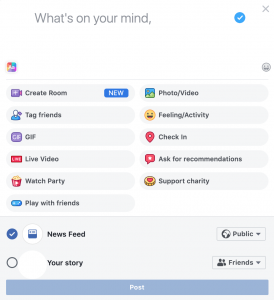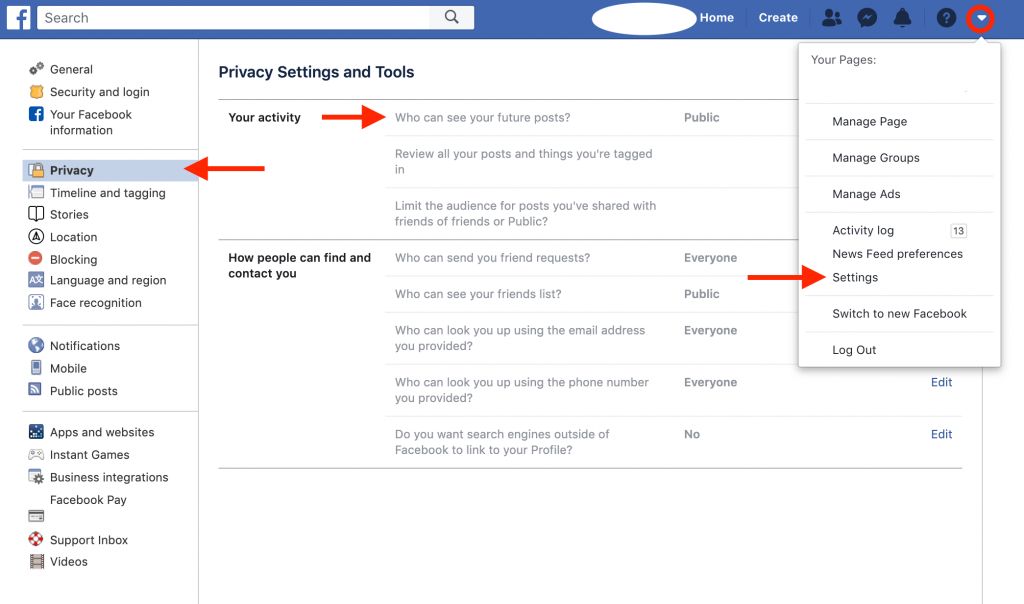The sheet will introduce you to the basic features of the social media platform Facebook.
General Objective
Preparation time for facilitator
Competence area
Name of author
Resource originally created in
How does Facebook work?
Facebook is a social network allowing you to share various types of content with ‘friends’ – other users who are part of your network. Users can post content on their own timeline or those of others. The timeline is just that: a sort of chronology of content posted by our friends and groups we follow. The following types of content can be posted:
- text
- photos
- videos
- internet content we like and want to share
- live streams for friends– ‘Facebook live’
Facebook was created in 2004 and has continued to evolve through updates pushing new features and alterations to the user interface. We will now go over the its basic features as well as some user account settings.
Creating an account
Before creating your account, you will have to access Facebook here, or, if using a phone or tablet, download the app on Google Play or App Store.
- On the home page, fill in your name, email address or phone numbers, date of birth and gender.
- Create a strong password.
- Click on ‘Sign Up’
- You will then receive an email from Facebook informing you that your account’s creation will be confirmed by following the mail’s written instructions.
Logging in
Go to the homepage and in the top right, enter your email address and password and click on ‘Log In’. 
Facebook profile
You can customise your profile by entering various personal and professional information such as:
- work and/or study details
- where you live
- family members (if they are your Facebook friends)
- significant events
Using your profile, you can also manage photo albums, share your interests in terms of music, books, films, etc. To access your profile, once you are logged in, click on your name on the top of the page.
Facebook features
→ Search/ Add / Accept friends To find friends, enter their names into the search bar at the top of the interface. You can then click on their account and then ‘Add friend’. Conversely, people can add you, at which point you will receive a request you can choose to confirm, delete, or ignore. → Post and tag on your timeline The Facebook timeline updates itself in real time with posts from your friends as well as groups and pages you follow. You can react to posts using emojis or comments. You can also share others’ posts on your own timeline (this means that all your friends will be able to see the shared post). ![]() Like
Like ![]() Laughter
Laughter ![]() Heart
Heart ![]() Surprise
Surprise ![]() Sadness
Sadness ![]() Anger You also post your own content in one of the following ways:
Anger You also post your own content in one of the following ways:
- Using interesting articles (or other content) you find online. Often, at the bottom of an article you find on a news site for example, there will be the Facebook logo you can click to share the content.
- By creating your own content: writing text, uploading photos or video, etc.
 → What is Facebook Messenger ? This is Facebook’s instant messaging service allowing users to communicate privately by text, audio or video. You can also share content. This is a feature that also exists in the standalone app ‘Messenger’.
→ What is Facebook Messenger ? This is Facebook’s instant messaging service allowing users to communicate privately by text, audio or video. You can also share content. This is a feature that also exists in the standalone app ‘Messenger’.
Privacy settings
On Facebook, as with other social media platforms and on the internet more broadly, it is important that we are aware of how to protect our personal data. When you post something, ask yourself the following questions:
- Should this information be made public or should it remain private?
- Is it necessary to share my geographical location?
- With whom will my information be shared?
- Am I aware of who will have access to this information?
To manage your account’s privacy settings, click/tap on the dropdown menu at the top right of the interface (ensuring first that you are logged in), then go to ‘Privacy’. You will then have a choice between several options: you can see your activity, who can seen you photos and videos, etc. 